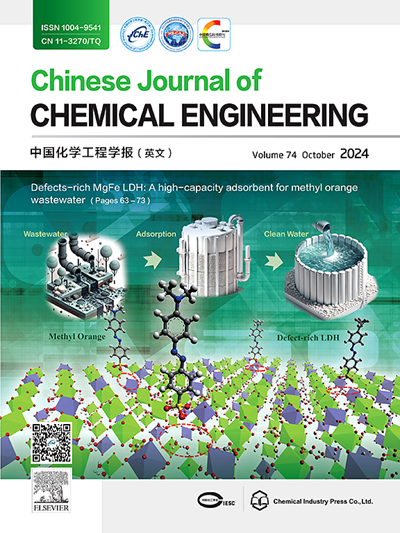The effects of Cl− and Ca2+ on corrosion and scale formation of 3Cr steel in CO2 flooding produced fluid
IF 3.7
3区 工程技术
Q2 ENGINEERING, CHEMICAL
引用次数: 0
Abstract
To elucidate the effects of Cl− and Ca2+ on the corrosion and scale formation of 3Cr steel in CO2 flooding-produced fluid, corrosion weight loss experiments, and titration experiments were conducted. The resulting products were characterized using scanning electron microscopy (SEM), X-ray diffraction (XRD), and X-ray photoelectron spectroscopy (XPS). This study examined the corrosion and scaling behavior of 3Cr steel under the influence of Cl− and Ca2+. The results indicate that both Cl− and Ca2+ promote the corrosion of 3Cr steel. Notably, Cl− diminishes the promoting effect of Ca2+ on corrosion and inhibits scaling, revealing a mutual enhancement between corrosion and scaling. The mechanisms of localized corrosion under varying concentrations of Cl− and Ca2+ differ; under-scale corrosion occurs in environments with 5000 mg·L−1 Cl−, while Cl−induced corrosion is observed in 20000 mg·L−1 Cl− environments. This study highlights that under the synergistic effects of Cl−, Ca2+, and scaling processes, the protective product film dissolves, thereby influencing both corrosion and scaling processes.
Cl−和Ca2+对CO2驱油液中3Cr钢腐蚀和结垢的影响
为了阐明Cl−和Ca2+对3Cr钢在CO2驱替液中腐蚀和结垢的影响,进行了腐蚀失重实验和滴定实验。利用扫描电镜(SEM)、x射线衍射(XRD)和x射线光电子能谱(XPS)对产物进行了表征。本文研究了Cl -和Ca2+对3Cr钢的腐蚀和结垢行为的影响。结果表明,Cl−和Ca2+均促进了3Cr钢的腐蚀。值得注意的是,Cl−会减弱Ca2+对腐蚀的促进作用,抑制结垢,表明腐蚀和结垢之间存在相互增强的关系。不同Cl -和Ca2+浓度下的局部腐蚀机制不同;在浓度为5000 mg·L−1 Cl−的环境中,发生过鳞腐蚀;在浓度为20000 mg·L−1 Cl−的环境中,发生Cl−诱导腐蚀。本研究强调,在Cl−、Ca2+和结垢过程的协同作用下,保护膜溶解,从而同时影响腐蚀和结垢过程。
本文章由计算机程序翻译,如有差异,请以英文原文为准。
求助全文
约1分钟内获得全文
求助全文
来源期刊

Chinese Journal of Chemical Engineering
工程技术-工程:化工
CiteScore
6.60
自引率
5.30%
发文量
4309
审稿时长
31 days
期刊介绍:
The Chinese Journal of Chemical Engineering (Monthly, started in 1982) is the official journal of the Chemical Industry and Engineering Society of China and published by the Chemical Industry Press Co. Ltd. The aim of the journal is to develop the international exchange of scientific and technical information in the field of chemical engineering. It publishes original research papers that cover the major advancements and achievements in chemical engineering in China as well as some articles from overseas contributors.
The topics of journal include chemical engineering, chemical technology, biochemical engineering, energy and environmental engineering and other relevant fields. Papers are published on the basis of their relevance to theoretical research, practical application or potential uses in the industry as Research Papers, Communications, Reviews and Perspectives. Prominent domestic and overseas chemical experts and scholars have been invited to form an International Advisory Board and the Editorial Committee. It enjoys recognition among Chinese academia and industry as a reliable source of information of what is going on in chemical engineering research, both domestic and abroad.
 求助内容:
求助内容: 应助结果提醒方式:
应助结果提醒方式:


